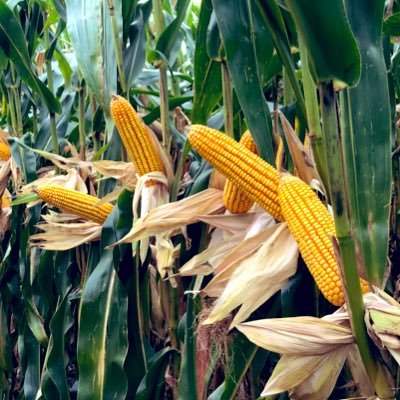
Blake Hadley
@blakeahadley
Followers
777
Following
705
Media
59
Statuses
187
Law of the Minimum Growth/Yield/Success is controlled by the most limiting nutrient/factor. How many times will that be stated in meetings that are soon to start up? Often times nutrients are used as the example here. Liebig (the one whose name is attached to this law)
1
0
8
Phosphorus Cycle The phosphorus cycle is incredibly complex, but it’s one of the most important things to understand if you want to manage fertility efficiently. Phosphorus doesn’t just sit in one pool, it moves constantly between plants, microbes, and organic matter in the
3
10
63
First season offering BaselineRx to growers, very excited to help farmers learn more about how their soil functions! @bw_fusion
0
4
3
Every field. Every time. I take that picture before I bag the samples. The difference is 👀catching! Here are today’s! Some are more subtle. But color and soil structure differences are obvious!
Management Zones Your zones are only as good as the soil test used. You can have the best zones in the world, but if your test only measures the chemical side of the soil (Bray, Olsen, AA, Mehlich), you’ll keep chasing ppm values that don’t tell the whole story. You will just
2
4
29
Management Zones Your zones are only as good as the soil test used. You can have the best zones in the world, but if your test only measures the chemical side of the soil (Bray, Olsen, AA, Mehlich), you’ll keep chasing ppm values that don’t tell the whole story. You will just
3
9
34
This. Is. The. Way. First we must understand how we have changed ag, then we must understand how to correct it.
Decided to make this video to address a lot of the questions that have been sent the last few days. Nutrient efficiency - what happened? I’m sure someone will tear this apart, claiming it’s wrong. This is my opinion only, based off studying literature and the crop. I’ve
3
3
21
Decided to make this video to address a lot of the questions that have been sent the last few days. Nutrient efficiency - what happened? I’m sure someone will tear this apart, claiming it’s wrong. This is my opinion only, based off studying literature and the crop. I’ve
8
14
83
pH or Calcium “Plants create nutritional values by means of the calcium’s nutritional service, and not by its removal of soil acidity” p. 197 An excerpt from Albrecht on Calcium where he looked at calcium applications on soybeans planted in sand: “By growing test plants in a
3
2
29
Podcast Listeners This might be one of the best Crop Cast episodes to date. Worth the time if you’ve got it! https://t.co/yGnSmkhcQJ
1
0
4
A Quick History of Grid Sampling Soil sampling and recommendations based on those samples have come a long way since the early 1900s in some ways. But in other ways, they have not. Consider the first recorded field that got recommendations based on soil samples. This was
2
3
19
Kind of a trick question. Oxygen is technically correct, but what is needed to have oxygen available? A well-flocculated soil. Soil that has a structure that allows the biology in it to breathe. Calcium helps to build that structure. Calcium also regulates the flow of life
0
0
5
Outside of Carbon, what is the number one essential element for all microorganisms in the soil?
0
0
2
What ultimately controls crop residue breakdown? 5 things: •Soil water content •Soil temperature •Soil nutrient status •Soil microbial biomass •Soil aeration Consider this Iowa State study (looking at tillage and N to manage residue) when thinking through residue
2
0
14
This was really cool to see last fall. A Baseline Rx user who started in 2021 and saw massive changes in their soil in 3 years. High quality zones+high quality soil samples+recs based on efficiency= a soil that provides more with less.
0
2
11
At the center of soil health is WEOC (Water Extractable Organic Carbon) WEOC= the carbon source microbes feed on. Alter it, and you alter the biology. Alter the biology, and you alter the soil. This one change can change everything about how your soil acts and produces.
0
0
8
Soil is alive. Yet most of our standard tests treat it like a static bunch of minerals. Every soil test is just a snapshot in time but the question is, what are you actually measuring in that snapshot? OM, pH, CEC, P, K, Mg, Ca, and Base Saturations. Is that enough? How much
1
3
16
Here is a short guide when trying to understand how the biological & physical sides of the soil test interact with one another
Soil Sampling This Fall? Consider how your zone maps are only as good as your soil test is. You can pick up all of the right things in a zone map (elevation, water flow accumulation, topography, etc.), but without a dynamic soil test it doesn’t really matter. What I mean by
0
2
6
1
12
32
Update: March and April were less than a bushel difference. Would like to break down the yield data further. The mays were greener than we thought and need a few days will update on those when the time comes!
Planting date study is getting harvested tonight March 13th April 17th May 17th What’s going to win? Drop your guesses and I’ll post the results later tonight!
1
1
2






